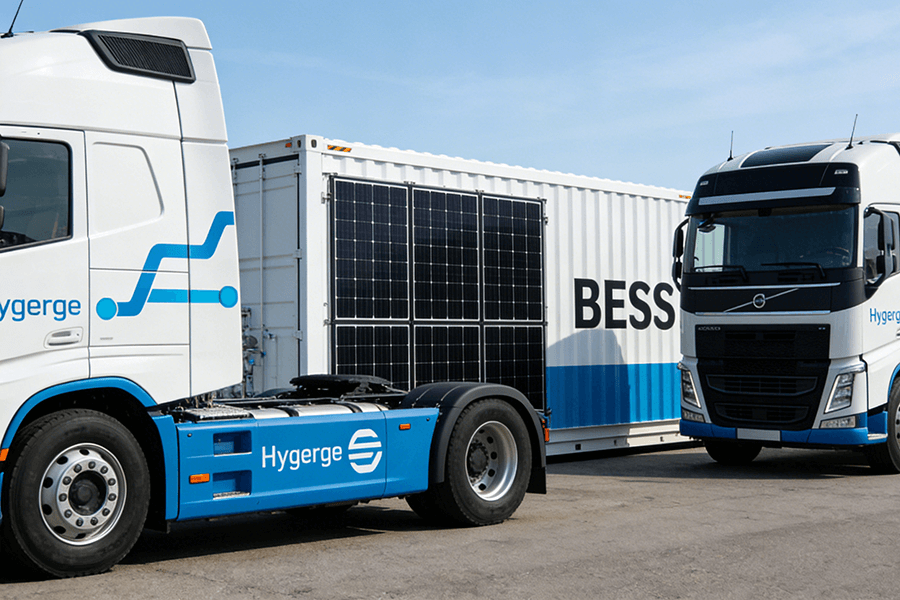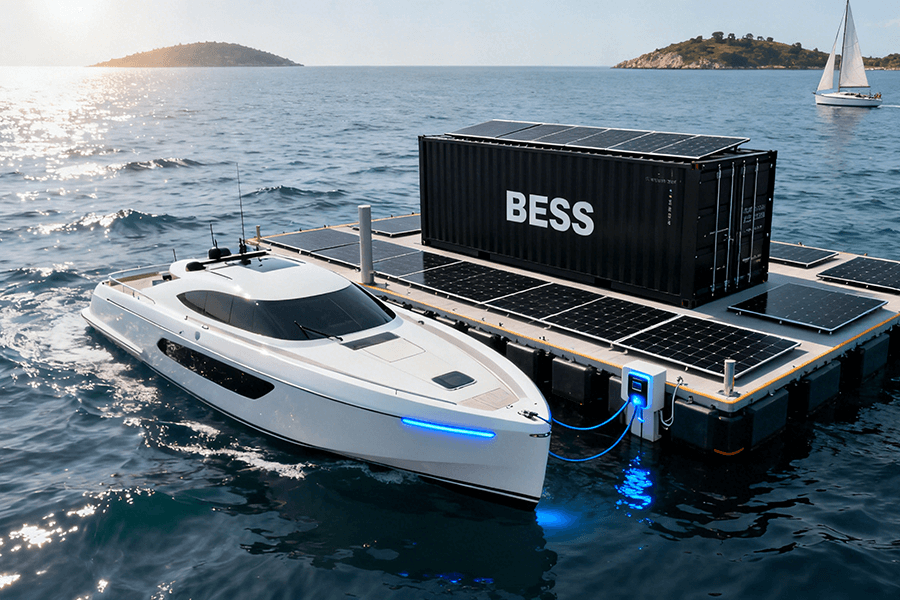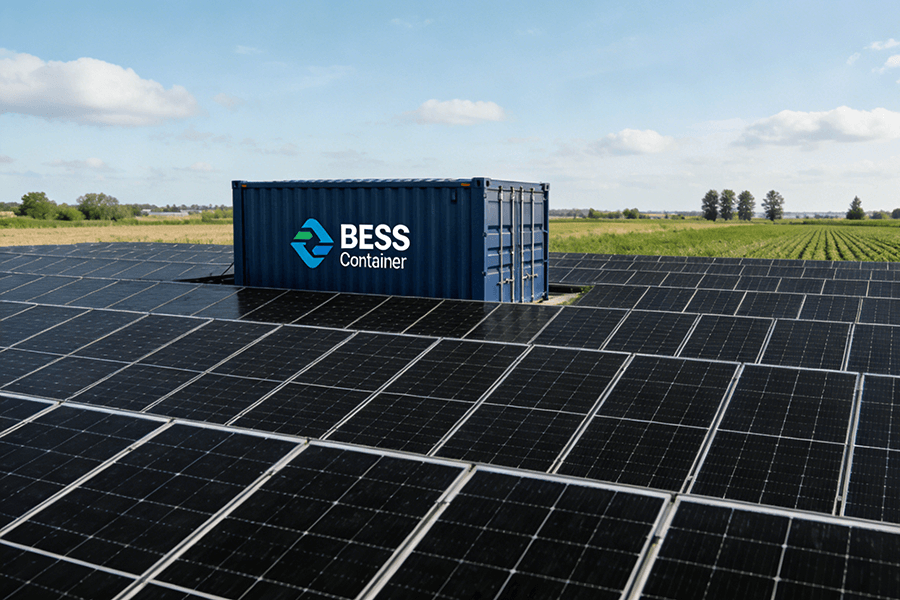
From Panic Cuts to Smart Optimization—The EU DR Evolution
Let’s set the scene: The EU’s Demand Response Directive (2019/944) has issued a non-negotiable mandate—doubling the bloc’s Demand Response (DR) capacity by 2030 is not just a target, but a critical step to realize its ambitious net-zero emissions goals. This directive aims to reshape Europe’s energy landscape, transforming how electricity demand is managed across the continent.
However, the current reality starkly contrasts with these lofty aspirations. Traditional DR tools, which have long been the mainstay of energy management strategies, are increasingly showing their limitations.
Case in Point: Industrial Load Curtailment Challenges
Take, for example, the challenge of curtailing industrial loads during peak energy hours. Picture a steel mill, where furnaces blaze at temperatures exceeding 1,500°C, and production lines operate in a carefully orchestrated symphony of heat, metal, and machinery. Asking such an industrial giant to halt operations, even briefly, during peak energy demand is not only operationally complex but also financially detrimental.
It’s akin to instructing a bustling coffee shop in the heart of a busy city to close its doors during the morning rush—chaos ensues, costs skyrocket, and customer dissatisfaction mounts.
Industrial load curtailment, once a reliable DR measure, now struggles to meet expectations. Statistical analysis reveals a concerning trend: on average, industrial facilities comply with DR dispatch signals only 75% of the time. To put this in perspective, consider the following comparative table:
| Energy Management Measure | Average Compliance Rate | Impact on Grid Reliability |
|---|---|---|
| Industrial Load Curtailment | 75% | High risk during peak hours |
| Modern BESS-based DR | Projected 95%+ | Enhanced stability |
This lackluster performance not only creates inefficiencies in the energy system but also poses a significant threat to the EU’s 2030 energy targets. The gap between compliance expectations and actual results underscores the urgent need for innovative solutions.
BESS Containers: A Paradigm Shift in DR Strategies
Enter BESS containers—the unsung heroes of the modern energy grid. These portable, self-contained energy storage units represent a paradigm shift in DR strategies. Unlike traditional methods that rely on reactive, last-minute adjustments, BESS containers enable proactive, strategic energy management.
They can store excess energy during periods of low demand—such as when solar farms generate surplus power on sunny afternoons or wind turbines produce more electricity than the grid can immediately absorb—and release it precisely when needed, during peak consumption periods.
The Growth Trajectory of Battery Storage in Europe
The growth trajectory of battery storage in Europe further emphasizes the importance of BESS containers. Industry forecasts project that Europe will require a staggering 780GWh of battery storage by 2030 to effectively balance its rapidly expanding renewable energy fleet. This surge in renewable energy sources, while crucial for decarbonization, also introduces variability and intermittency into the grid.
BESS containers act as a buffer, smoothing out these fluctuations and ensuring a stable, reliable power supply.
In essence, BESS containers are no longer a luxury or an optional upgrade. They have evolved into a fundamental building block for a resilient, sustainable energy grid. As Europe marches towards its net-zero future, these compact yet powerful energy storage solutions will play an instrumental role in optimizing DR programs, benefiting both grid operators and end-users alike.
Why BESS Containers Outshine Traditional DR Resources
Let’s cut to the chase: BESS containers make traditional Demand Response (DR) methods look like flip phones in a world of smartphones. The gap in performance, reliability, and user-friendliness is staggering—and the data proves it.
Blazing Fast (and Unfailingly Reliable) Response
Grid emergencies operate on a merciless timeline, brooking no delay for meetings or equipment warm-ups—and BESS containers rise to the occasion with unparalleled agility.
Unlike industrial loads, which can take minutes or even hours to recalibrate their energy consumption, BESS units exhibit near-instantaneous responsiveness, adjusting power output within seconds. This crucial difference was underscored by a 2024 study conducted by Aggregatoir.EU, a leading Belgian energy aggregator. Their research revealed that BESS containers achieved an impressive 98% compliance rate with DR dispatch signals, compared to the meager 75% rate of traditional industrial load curtailment methods.
To illustrate the practical implications, consider a hypothetical grid overload scenario:
While conventional load management might leave operators scrambling to stabilize the system, BESS containers can immediately discharge stored energy, preventing potential blackouts or cascading grid failures.
- For grid operators: This reliability translates to significant cost savings by avoiding emergency interventions and maintaining grid stability.
- For energy users: They benefit from a consistent revenue stream, as they never miss out on lucrative DR opportunities due to slow response times.
No Disruptions—Just Pure Profit
The most compelling advantage for energy users lies in the seamless integration of BESS containers into existing operations. Unlike traditional load curtailment, which often necessitates drastic measures such as halting factory production or dimming commercial lighting, BESS units operate discreetly in the background. By leveraging stored energy reserves, they effectively offset grid demand without impeding normal business activities, allowing users to capitalize on DR incentives while maintaining operational continuity.
A real-world example from a Finnish shopping mall in Helsinki vividly demonstrates this benefit:
Equipped with a 1.2MWh BESS container, the mall participated in Finland’s national DR program throughout 2024. The results were remarkable: without any visible disruptions to storefront lighting, food court operations, or the overall shopping experience, the mall generated €50,000 in DR revenue over the course of the year.
In stark contrast, a nearby manufacturing plant relying on traditional load curtailment strategies faced a net loss. Despite earning €15,000 in DR incentives, production halts incurred losses totaling €30,000, resulting in a net deficit of €15,000.
These contrasting outcomes underscore the transformative potential of BESS containers in the DR landscape, turning what was once a “costly hassle” into a reliable “passive income stream.”
Table 1: BESS Containers vs. Traditional Industrial Loads—The DR Scorecard
| Performance Metric | BESS Containers | Traditional Industrial Loads |
|---|---|---|
| Response Time | Seconds | Minutes/Hours |
| DR Signal Compliance Rate | 98% | 75% |
| Operational Disruption | None (behind-the-scenes operation) | Severe (halts production/operations) |
| Annual Revenue (per 1MW Unit) | Up to €80,000 | €15,000–€25,000 (minus downtime losses) |
| Long-Term Cost Risk | Low (no production losses) | High (downtime, equipment wear) |
BESS Containers: Dominating Europe’s Key DR Market Segments
BESS containers aren’t one-trick ponies—they excel across the entire spectrum of Demand Response (DR) market segments, from the structured day-ahead auctions to the high-stakes, split-second decisions of real-time emergency response. This unparalleled versatility has positioned them as essential assets for both grid operators and aggregators, enabling more resilient and efficient energy management.
Day-Ahead & Intraday DR Markets: Predictable Profits, Guaranteed
Grid operators thrive on predictability, and BESS containers are tailor-made to meet this need. In Europe’s day-ahead and intraday DR markets, participants submit bids to either reduce consumption or inject energy into the grid over the subsequent 24–48 hours.
The inherent reliability of BESS containers makes them a standout choice, with their output boasting 100% predictability. Unlike traditional energy sources, BESS systems eliminate the risk of last-minute equipment malfunctions, operational delays, or weather-dependent variability.
Real-World Success Story: EnBW’s BESS Container Fleet
A prime example comes from EnBW, a leading German energy company. Their data-driven approach to BESS deployment reveals remarkable financial returns:
| Metric | Value |
|---|---|
| Capacity per unit | 1MW BESS container |
| Annual revenue | €80,000 (per unit) |
| Key advantage | Consistent, low-effort income stream |
This performance equates to a highly reliable “side hustle” for grid operations—one that requires minimal oversight yet consistently delivers revenue. Aggregators leveraging BESS containers can leverage this predictability to bid more competitively, maximizing returns for both themselves and their clients while contributing to grid stability.
Real-Time Emergency DR: Grid Saviors in Crisis
When unforeseen events threaten grid stability—such as sudden drops in renewable energy production or interconnector failures—BESS containers step in as the first line of defense. In these high-pressure scenarios, where split-second responses can prevent widespread outages, BESS units demonstrate their true value.
Case Study: UK-Norway Interconnector Failure (January 2024)
Incident: A critical interconnector between the UK and Norway experienced a sudden trip, resulting in a 1.2GW power supply shortfall to the UK grid. Grid frequency plummeted to 49.59Hz, well outside the safe range of 49.8–50.2Hz, triggering a high-alert emergency.
BESS Response:
- Speed: Within seconds of detection, National Grid activated 50MW of BESS containers across England and Wales.
- Impact: These units injected power into the grid, stabilizing frequency within just 2 minutes.
Outcome:
- Avoided blackouts for residential and commercial users
- Prevented estimated economic losses of €2 million per hour of potential downtime
- Reinforced BESS containers as indispensable assets for crisis management
This real-world scenario underscores how BESS containers transition from reliable revenue generators to grid heroes, showcasing their dual role in ensuring both economic efficiency and critical infrastructure resilience.
Maximizing DR Revenue: Smart Strategies for BESS Containers
To turn a BESS container from a “good investment” into a “great one,” you need more than just storage—you need smart integration with data, AI, and complementary resources. Here’s how top aggregators are boosting their DR revenue through innovative strategies and cutting-edge technologies:
AI-Powered DR Scheduling: The Brain Behind the Brawn
Artificial Intelligence (AI) has emerged as the cornerstone of modern Demand Response (DR) optimization for Battery Energy Storage Systems (BESS). Advanced AI platforms transcend basic analytics, harnessing a vast constellation of data sources:
- Historical DR event records
- Hyperlocal weather forecasts
- Real-time energy market prices
- Intricate grid demand patterns
This multi-dimensional analysis enables precise predictions of:
- When DR events are most likely to occur
- How lucrative they will be
These insights empower BESS owners to strategically select the most profitable opportunities and avoid low-return events.
Case Study: Enspired’s Data-Driven Success
Take Enspired, a trailblazing Spanish energy aggregator, as a prime example. Their state-of-the-art AI infrastructure processes an astonishing 70 billion data points daily, encompassing:
- Real-time grid signals
- Fluctuating market prices
- Regional consumption trends
This data-driven approach has yielded remarkable results: in 2024, Enspired reported a 25% increase in BESS DR revenue compared to traditional manual planning methods. For a 5MW BESS fleet, this translates to an additional €100,000 in annual revenue—a testament to the power of intelligent decision-making.
The table below illustrates the key performance metrics before and after implementing AI-driven scheduling:
| Metric | Manual Planning | AI-Powered Scheduling |
|---|---|---|
| Average Revenue per Event | €X | €1.25X |
| Event Selection Accuracy | 65% | 92% |
| Annual Revenue (5MW Fleet) | €Y | €Y + €100,000 |
Hybrid DR Portfolios: Strength in Numbers
In the evolving landscape of DR, the concept of “strength in numbers” has taken on a new meaning. Leading aggregators are capitalizing on the synergy between BESS containers and other flexible resources, such as:
- Electric vehicle (EV) fleets
- Smart thermostats
- Commercial HVAC systems
This integration creates comprehensive, high-capacity DR portfolios. The “one-stop-shop” approach not only enhances operational flexibility but also positions aggregators as preferred partners for grid operators, who value the convenience of managing multiple DR services through a single entity.
Case Study: Neoen’s Diversified Portfolio
A prime illustration of this strategy is Neoen, a prominent French aggregator. Neoen successfully assembled a hybrid portfolio comprising:
- 100MW of BESS containers
- 50MW of connected EV fleets
This diversified setup proved to be a game-changer: in 2024, the portfolio secured a prestigious 3-year DR contract with France’s transmission system operator (TSO), RTE, valued at €12 million. The BESS units excelled in providing rapid emergency response during peak demand spikes, while the EV fleets offered sustained load reduction over longer durations. Together, they created a versatile solution capable of addressing a wide spectrum of DR requirements.
This strategic approach extends beyond mere contract wins; it represents a calculated move to dominate the market by offering unparalleled reliability, flexibility, and cost-effectiveness. As the demand for integrated energy solutions continues to grow, hybrid DR portfolios are poised to become the new standard for aggregators aiming to maximize their market share and revenue potential.
Meet Maxbo Solar: Your Trusted BESS DR Partner (That’s Us!)
At Maxbo Solar (www.maxbo-solar.com), we don’t just build BESS containers—we engineer EU-grid-ready DR powerhouses meticulously crafted to empower operators and users alike. Our mission is twofold: to maximize revenue streams while fortifying grid stability across Europe. As a vanguard in solar and energy storage solutions tailored specifically for European markets, we’ve navigated the intricate landscape of EU DR programs. From grappling with stringent compliance frameworks to adapting to unpredictable weather variables, our BESS containers represent the culmination of years of research, innovation, and on-the-ground experience.
Our BESS Containers: Built for EU DR Excellence
Each Maxbo Solar BESS container is a testament to engineering prowess, designed to not only meet but exceed the highest EU standards. Here’s a detailed breakdown of the features that streamline DR participation and drive profitability:
| Feature | Technical Details | Competitive Edge |
|---|---|---|
| Lightning-Fast Deployment | Towable 20ft units with plug-and-play functionality; grid connection in 2 hours | Reduces time-to-revenue compared to traditional installations, eliminating construction delays and permitting hurdles |
| Extreme Weather Resilience | Operational range from -25°C to 45°CIndustrial-grade insulation and climate control systems | Ensures continuous operation in diverse European climates, from Arctic conditions in Scandinavia to Mediterranean heatwaves |
| EU-Compliant Security | AES-256 encrypted Battery Management Systems (BMS)Anti-tamper locksFull compliance with EU Regulation 2019/810 | Protects critical energy infrastructure data and assets, instilling confidence in regulatory bodies and stakeholders |
This robust feature set is complemented by our SmartDR Software Suite, which integrates real-time grid data analytics. It enables proactive optimization of energy storage and dispatch, ensuring peak performance during DR events.
We Walk the Talk—Proven Results in EU DR
Our commitment to excellence is backed by a track record of tangible achievements. In early 2025, our 2MW BESS fleet in Finland faced a formidable challenge during a severe blizzard. While the grid succumbed to the harsh conditions, our systems provided uninterrupted power to local disaster shelters for 89 consecutive hours. This resilience isn’t just a testament to our hardware; it’s indicative of our 100% compliance with dispatch signals across all DR applications.
Our solutions cater to a diverse clientele:
- Aggregators in Germany’s day-ahead DR market can leverage our BESS to optimize bidding strategies and secure lucrative contracts.
- Commercial entities like Italian shopping malls can transform idle energy capacity into a passive income stream.
- Grid operators across the UK can rely on our emergency support systems to enhance grid resilience.
At Maxbo Solar, we’re more than just a technology provider—we’re your strategic DR co-pilot. From initial system design and regulatory compliance to ongoing maintenance and performance optimization, we handle every technical aspect. This allows you to focus on what matters most: maximizing your return on investment and contributing to a more stable European energy grid.
Conclusion: BESS Containers—The DR Revolution Europe Needs
BESS containers aren’t just improving European DR programs—they’re revolutionizing them. By combining blazing-fast response times, zero operational disruption, and AI-driven profitability, they’ve become the backbone of Europe’s journey to a net-zero, resilient grid. The data speaks for itself: 98% compliance rates, €80,000 in annual revenue per MW, and saved blackouts worth millions.
But this revolution needs a push. Grid operators must step up with better incentives for BESS-based DR—like higher auction prices or longer-term contracts—to accelerate adoption. For energy users and aggregators, the time to act is now: Every day you wait is a day you lose out on DR revenue and a chance to future-proof your operations.
At Maxbo Solar (www.maxbo-solar.com), we’re ready to help you lead this revolution. The grid’s future is flexible, profitable, and powered by BESS—and we’re here to make sure you’re part of it.
The EU’s 2030 DR goals aren’t just targets—they’re opportunities. And BESS containers are the key to seizing them.






